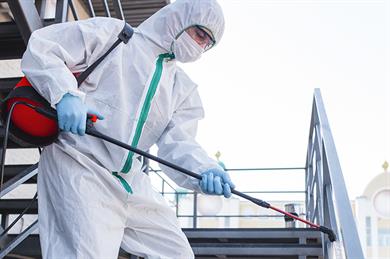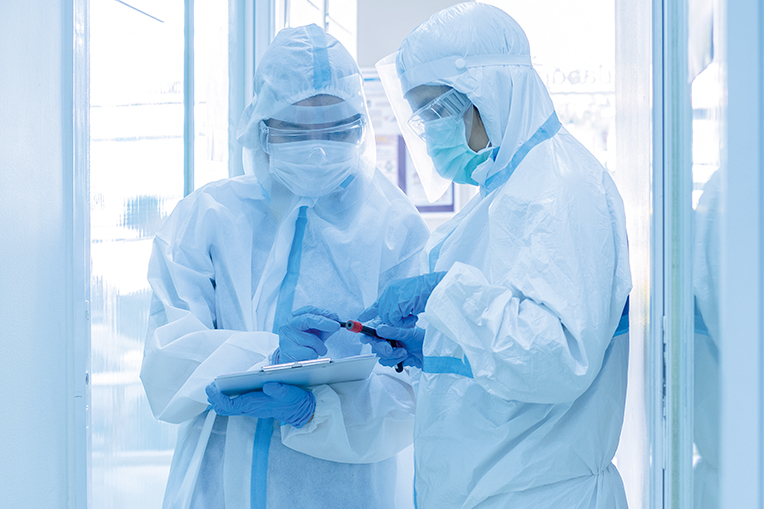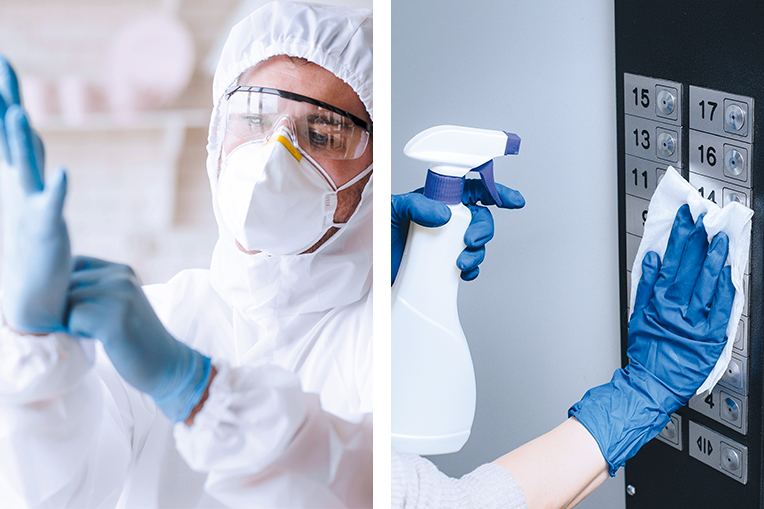 By Jeremy Kong,
Decontamination Expert with Republic Polytechnic
T
By Jeremy Kong,
Decontamination Expert with Republic Polytechnic
The very first case of COVID-19 in Singapore was reported on 23 January 2020 after a 66-year-old Chinese man from Wuhan developed symptoms and fever after arriving in Singapore. [1] Soon, such imported cases eventually led to clusters of local transmissions being formed, with the first clusters reported on 4 February 2020 at Yong Thai Hang [2] and on 5 February 2020 at Grand Hyatt Singapore. [3] The increase in local infection clusters led to a surge in demand for both cleaning and preventive disinfection services.
Initial challenges faced in providing disinfection services include the shortage of Personal Protective Equipment (PPE) and the need to quickly step up disinfection training for the Environmental Service (ES) workforce. As of May 2020, supplies have stabilised and most companies offering disinfection services have received necessary training. ES professionals are also seeking ways on how to better equip themselves to battle the current situation and to prepare themselves for post-pandemic Singapore.
The Opportunity
Six months into the COVID-19 pandemic, everyone is yearning for life to return to normalcy. The truth is, it is unlikely that we will ever go back to pre-COVID-19 norms. The crisis surfaced while we were comfortable living our lives in the previous norms.
Focusing on the ES sector, ES professionals are now held in higher regard by the general public, with 8 in 10 Singaporeans willing to pay more for essential services such as cleaning, and especially so if the extra amount goes directly to the workers[4].
Training at Individual and Team Lead Levels
Disinfection targeting various biological risk group levels in different facilities are complex disinfection operations that require decision making and operation adaptations. The role of the Team Lead therefore becomes an important one. Tasks include: to plan and collate information from the ground, to prepare and equip the team with appropriate PPE and disinfectant for the operations, to handle direct disinfection operations on the ground and to manage the incident site.
Recruitment of Physically Fit Employees
The cleaning industry has about 60,000 workers with over 68 per cent of them already in their 60s. [5] These senior workers are not the ideal candidates to don the PPE to carry out disinfection work. Therein lies the need for more physically-fit, younger workers to join the ES workforce and be part of the “ES Special Force” (the disinfection team).
Similar to how the military and civil defence hazmat teams train for decontamination operations, physical conditioning of these individuals is of utmost importance. The disinfection team will need to acclimatise to working in a warmer environment with restricted air flow through their n95 mask or respirators. Individuals with eczema conditions may also find it difficult to carry out their duties in PPE suits due to the excessive sweating and potential skin irritations caused by PPE or disinfectants.
Managing Customer Expectations
We are often influenced by what we see on television when it comes to disinfection work. We tend to relate to science fiction or bio-terrorism movies, where the actors would be in either Tyvek or encapsulated positive pressured suits designed for mitigating the world’s nastiest viruses or unknown biological agents. However, this is not the case when it comes to disinfection work for cleaning companies.
When cleaning companies are activated for disinfection operations, the disinfection team would be briefed on the situation at the incident site and the specific type of biological agent/s they would be dealing with. The scenarios faced by the team may be a confirmed case, a suspected case, or preventive disinfection against a known virus or bacteria. Therefore, a risk assessment would be carried out to decide on the right PPE and disinfectants needed to carry out the disinfection work. After the Team Lead gathers the relevant information about the case, he can then propose a disinfection plan and give proper advice to help the customer revert the site to normalcy.
Beyond COVID-19 Disinfection Work
As we navigate our way through this COVID-19 pandemic, our definition of cleanliness will no longer be confined to the dirt that we can see. We will be guarding against other highly contagious viruses, as well as invisible germs. As companies consider ways to smoothen the transition for employees to return to the workplace, cleaning companies will need to adopt new practices in their cleaning and disinfection services, meeting the expectations to be transparent and outcome-based.
By incorporating science and technology in disinfection operations, we are hopeful that more young blood will be attracted to join the ES workforce and that they would be accorded the same level of respect as our healthcare workers.
References
1. Abdullah, Zhaki (17 July 2020).
“Singapore confirms first case of Wuhan virus”. CNA. Retrieved 23 January 2020.
2. Chang, Ai-Lien; Khalik, Salma (17 July 2020).
“Coronavirus: S’pore reports first cases of local transmission; 4 out of 6 new cases did not travel to China”. The Straits Times. Archived from the original on 4 February 2020. Retrieved 4 February 2020.
3. The Star Online.
“Grand Hyatt Singapore Disinfecting Hotel after Two Travellers Test Positive for Wuhan Virus.” The Star Online, Retrieved on 5 Feb. 2020,
4. Tai, Janice. (17 July 2020).
“8 In 10 Singaporeans Willing to Pay More for Essential Services: Survey.” The Straits Times, Retrieved 14 June 2020,
5. Seow, Joanna.
“Cleaners to Be Better Trained in Safety; Higher Minimum Pay for Restroom Staff.” The Straits Times, Retrieved on 3 Dec 2019.

